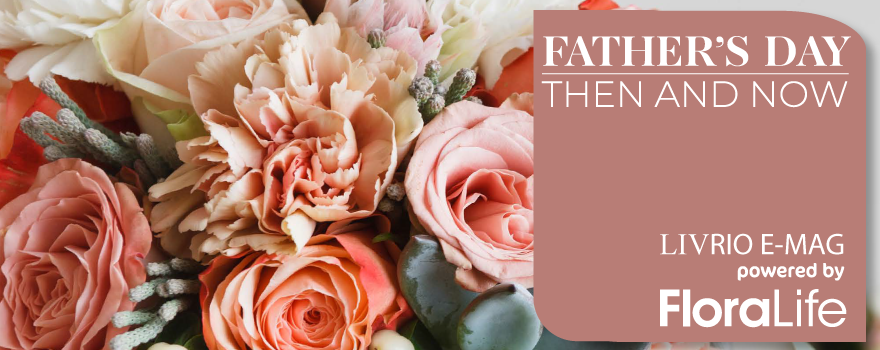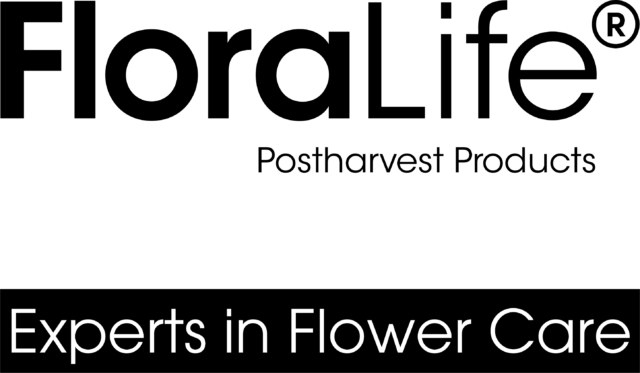Father’s Day: Then and Now
LivRio Magazine May 2021, powered by FloraLife

As the days begin to grow longer, we are reminded that June is just around the corner, bringing not only the summer solstice, but also the day on which we celebrate the Dads in our lives. Father’s Day is a well-established holiday nowadays, but it wasn’t always so. It was actually the popularity of Mother‘s Day in the late 1900s which was the catalyst for proposing a Father’s Day around the same time. The idea for Father’s Day was put forward by a woman named Sonora Smart Dodd, who was one of six children raised by a widower, and was officially celebrated for the first time in June 1910.
Unlike Mother’s Day, the popularity of Father’s Day waxed and waned in the early days. But with efforts to raise the profile, the holiday began in earnest during the great depression of the 30s. By WWII, this holiday was seen as a patriotic way to honor the troops and support the war effort. Despite this, it wasn’t officially recognized by government until 1972 when President Nixon signed a proclamation making it a national holiday.
Father’s Day falls in the middle of June, when roses are at their peak bloom time in the northern hemisphere. So, what better way to celebrate than visit a rose garden with Dad, or share some beautiful cut roses with him? There are so many beautiful varieties and different colors available, there’s sure to be one he’ll love.
Not only are roses one of the most iconic flowers in the world, but you may be surprised to learn that they are related to a whole host of summer fruits too. Roses are a member of the Rosaceae family, along with strawberries, cherries, plums, apricots, peaches and even almonds. Although at first glance, these crops may not seem to be related to roses, if you look very carefully at their flowers you will be able to identify the family resemblance.
Most garden roses and all cut flower roses are grown from hybrids, plants that are produced by crossing together different species of roses. The most common roses grown for cut flowers are Hybrid Teas and Rosa grandifloras, with each being available in a vast array of different variet-ies. If that sounds all a bit confusing think of Hybrid Teas and Grandifloras as being a type of dog, and the varieties being all the colors those dogs would come in.
Most species of rose are native to Asia, but there are also a few native to Europe, North America, and Northern Africa. Regardless of origin, the popularity of roses has been so great that there are very few people on this earth who do not recognize these beauties.
Hydration and Storage at Store Level
- Start processing with a clean bucket, sanitized with FloraLife® D.C.D.® cleaner.
- If received dry packed, conditioning of stem ends is recommended to prevent blockage and promote uptake. Cut approximately 1” / 3cm or more off stems. Use clean, sanitized clippers or knife, and treat with FloraLife® Quick Dip.
- Place flowers in a holding treatment such as FloraLife® Express 200. Do not put flowers directly in metal/galvanized buckets. Use clean, high quality water that has not been treated with a water softener as the salt levels can be damaging to flowers.
- Store in a cooler at 34 – 38° F / 1 – 3° C with a relative humidity of 75 – 85%.
- Allow minimum 2 hours to hydrate placing buckets in an area with good airflow.
- Always remember FIFO (first in/first out) when rotating flowers.
Vase Care
- Remove any leaves that might be below the vase solution.
- Cut approximately 1” or more off stems. Use clean, sanitized clippers or knife. If received dry, treat with FloraLife® Quick Dip.
- Immediately place flowers in vase solutions containing FloraLife Crystal Clear® 300 or FloraLife® Express 300.
Special Consideration
- Roses are best hydrated with their protective packaging intact. If received dry packed, leave stems in their packaging for at least 2 hours or until hydrated. If product is received wet packed from your supplier, there is no need to keep the packaging on when you process your roses. Gently remove it upon arrival.
- Avoid getting water on blooms! Roses are prone to botrytis when blooms are over saturated.
- Roses are ethylene sensitive; insist that your supplier treats with an ethylene inhibitor such as EthylBloc™ to protect against exposure. Do not store or display near ripening produce or products that produce ethylene.
- The outer petals of roses tend to be quite different from the inner petals, these are known as ‘guard petals’ and are a naturally occurring part of the rose. Many florists choose to remove for aesthetic reasons, but they can also add a naturalistic element if left untouched. To remove them, simply hold each petal firmly and give them a gentle tug to remove.
Happy father’s day!
To learn about best practices from the experts in flower care or to inquire about products and availability in your region, visit www.floralife.com or contact your local FloraLife representative.
*Product availability depends upon geographical region.
